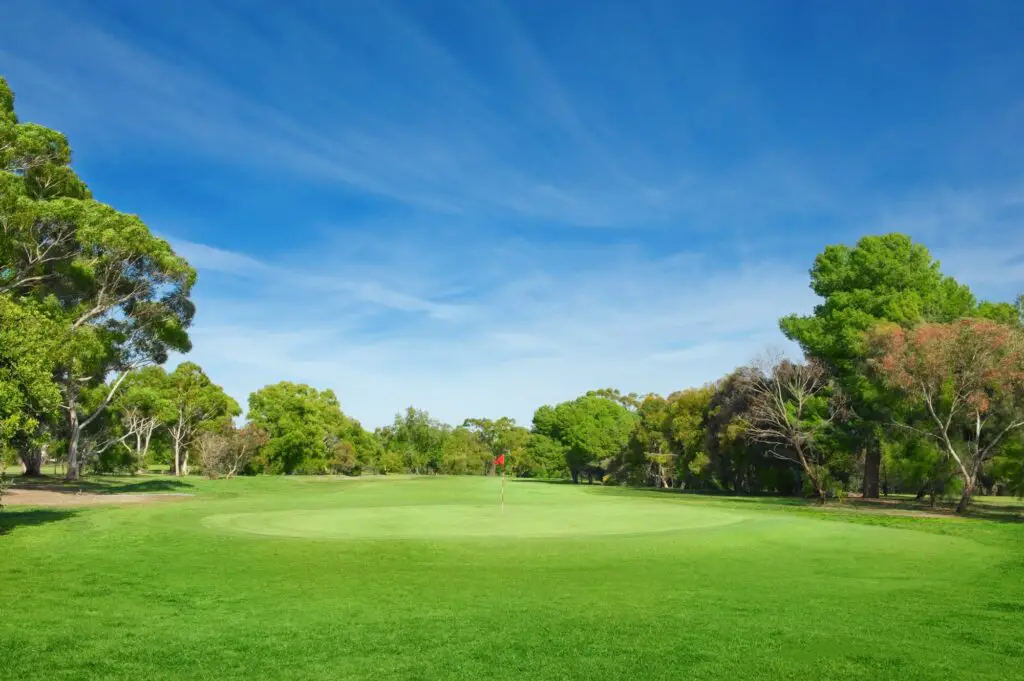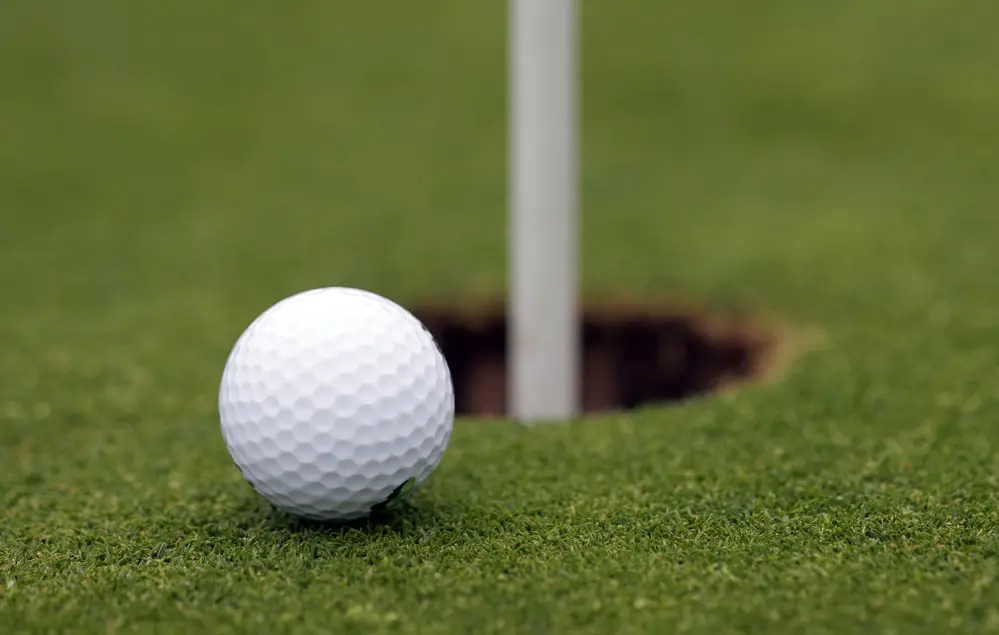Last Updated on May 31, 2023
Golf greens are a pivotal part of any golf course, and the grass selection can be game-changing. From bentgrass to poa annua to ryegrass, there is no shortage of options when it comes to choosing what kind of grass will be used on your green. But which one should you choose? It’s important to understand how each type behaves in order for you to get the most out of your golf game – after all, even small differences between types can affect playability and ball roll. In this blog post, we’ll explore what grass is used on golf greens and explore different types of grass so that you know exactly what’s going into making up those lush fairways.
Table of Contents:
- Understanding Different Types of Grass Used on Golf Greens
- The Benefits of Bentgrass Greens
- Poa Annua: A Common Choice for Golf Greens
- Ryegrass: An Alternative to Bentgrass
- Conclusion
Understanding Different Types of Grass Used on Golf Greens
For golf courses, bentgrass is the most widely used grass type, but poa annua and ryegrass can also be employed to create greens. Bentgrass is the most popular choice for many courses, but poa annua and ryegrass are also options. Grass types boast distinct features and advantages that can aid in picking the perfect grass for any setting. Understanding these differences can help you choose the best option for your course or personal green.
Bentgrass is one of the most common choices when building a golf green because it’s hardy and easy to maintain. It can flourish in cooler temperatures and light levels, making it a perfect fit for regions like Scotland or the north of England where temps rarely surpass 25°C (77°F). The blades stay short and dense, which makes them more resistant to wear from foot traffic than other varieties like ryegrass or poa annua. Additionally, bentgrass tends to have better ball roll on its surface due to its low growing height compared to other turfgrasses.
Poa Annua is another popular choice among golfers due to its ability to withstand heavy foot traffic as well as drought-like conditions during summer months in hotter climates such as southern Spain or Portugal. Its coarse texture allows balls hit onto it bounce off at an unpredictable angle – known colloquially amongst players as “poa annua bounce” – adding an extra element of challenge into play. This variety grows quickly, so regular mowing is necessary if you want your greens looking pristine all year round – something not all players may be willing (or able) commit too.
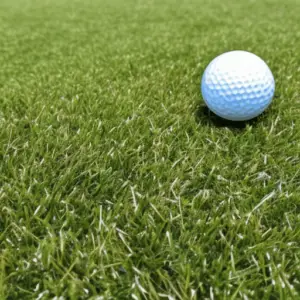
Ryegrass stands as a bridge between bentgrass and poa annua, possessing neither the wear resistance of the latter nor the heat-tolerance of the former; however, its own unique properties make it ideal for certain applications such as winter overseeding programmes in regions with cold climates like Europe and North America. This particular species’ natural frost tolerance, coupled with proper maintenance practices ensure that playability remains possible even when temperatures dip below freezing point – a real feather in its cap. Therefore, by leveraging ryegrass’s advantages, golfers can enjoy their favourite pastime regardless of what Mother Nature throws at them.
Overall, each kind of turfgrass has its own merits based on the atmosphere in which it is situated. Understanding these differences can help you pick out the perfect turfgrasses tailored specifically towards your needs, whether playing professionally at the tournament level or just casually enjoying time spent outdoors practising putting skills with friends and family alike.
Grass is a necessary element for golf greens, and knowledge of the various kinds can assist in making better decisions regarding course upkeep. Bentgrass has a number of benefits that should be considered, which will be discussed in the next heading.
The Benefits of Bentgrass Greens
Bentgrass is a popular choice for golf greens due to its resilience and ability to withstand wear and tear. Its fine texture makes it ideal for putting surfaces, as the ball rolls smoothly over the grass blades. The shallow root system of bentgrass also allows it to absorb water quickly, making it an excellent choice in wetter climates.
When compared with other types of grass, such as poa annua or ryegrass, bentgrass has several advantages. For starters, bentgrass requires less maintenance than other varieties. It’s more tolerant of mowing heights and doesn’t require frequent top-dressing or aeration like some other grasses do. This makes it easier on your pocketbook since you won’t have to pay for these extra services every few weeks.
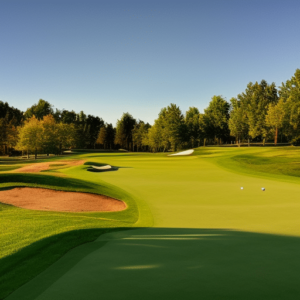
Another advantage of bentgrass is that it’s less susceptible to disease than most other types of turfgrasses used on golf courses. That means fewer fungicides are needed throughout the year, which can save money in chemicals costs too. Bentgrass also has a lower tolerance for drought conditions, so you don’t have to worry about watering your greens during dry spells – another bonus when trying to cut back on expenses.
The benefits of bentgrass greens are numerous, from providing a better playing surface to requiring less maintenance. Given its various advantages, it’s not unexpected that many golf courses opt for bentgrass greens. Poa annua is another popular choice for golf course green surfaces and will be discussed in the next heading.
Poa Annua: A Common Choice for Golf Greens
Poa annua is a common choice for golf greens due to its hardy nature and ability to withstand various weather conditions. Poa annua is particularly suited to colder climates, being more resilient than other grasses in the face of frigid temperatures. Additionally, poa annua requires less maintenance than some other varieties, making it an attractive option for golf courses that don’t have the time or resources to devote to extensive lawn care.
When considering poa annua as a turfgrass option, one of the main advantages is its durability and resilience. Poa annua has good wear tolerance and can handle heavy traffic from players and carts without becoming damaged or thinned out over time. This makes it ideal for busy courses where there are lots of people playing on the green at once. Additionally, poa annua can be mowed at low heights without sacrificing quality – another bonus for those looking to save time on mowing duties.
However, there are also some drawbacks associated with using poa annua on golf greens. For example, this type of grass does not tolerate shade very well; if your course has large trees or buildings blocking sunlight from reaching certain areas of the green, then you may need to look into alternative options such as bentgrass instead. Furthermore, poa annua tends to require more water than other types of turfgrass, which could lead to higher costs during dry periods when extra irrigation is needed.
Overall, many golfers find that poa annua offers them a great combination of playability and durability which makes it an excellent choice for their course’s putting surfaces. Poa annua provides an ideal balance between playability and longevity, allowing golfers to reap the rewards without breaking the bank. However, one must keep in mind the potential drawbacks associated with this type of grass before making any decisions.
Poa Annua is a popular choice for golf greens due to its hardiness and ability to withstand wear. Ryegrass, on the other hand, has become an increasingly viable alternative in recent years as it offers improved disease resistance and requires less maintenance than bentgrass.
Ryegrass: An Alternative to Bentgrass
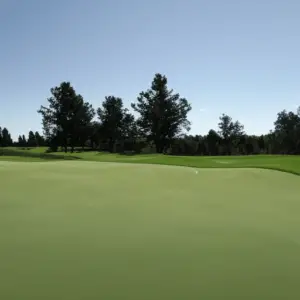
Ryegrass is a popular choice for golf greens in the UK due to its ability to tolerate cold weather and shade better than other grasses. It can also be used as an alternative to bentgrass, which is often seen as too delicate or finicky for some climates.
When it comes to appearance, ryegrass has a darker green colour than bentgrass and is coarser in texture. Ryegrass grows more quickly than bentgrass, making it easier to maintain throughout the year. It’s also less prone to disease and pests, so you don’t have to worry about keeping up with regular treatments like you would with bentgrass.
In terms of playability, ryegrass tends to be slower than bentgrass but still provides good ball roll on the putting surface. The high-traffic areas may need more frequent mowing and topdressing because of their faster growth rate compared with that of other grasses such as fescue or Kentucky bluegrass. This means you’ll need extra maintenance time if you want your course to look pristine all season long.
Ryegrass isn’t just limited to golf courses either; many homeowners use this type of grass in their lawns because it’s easy to care for and drought tolerant – perfect for those who don’t have much time or money for upkeep. Plus, since it requires less water than most other types of turfgrasses, using ryegrass can help conserve resources while still providing a lush look without sacrificing quality gameplay on your course.
For those looking for an alternative option when choosing their golf greens material that doesn’t require intensive maintenance yet offers great playing conditions, Ryegrass might just be the answer they’ve been searching for. With its hardiness against cold temperatures and fast growing nature, this turf variety could provide both practicality and beauty at any UK based golfing facility or even residential property alike.
Conclusion
As demonstrated, there is a wide variety of grasses that can be employed for golf greens; hence, it is critical to comprehend the pros and cons of each type in order to ensure your course has an attractive appearance and provides an enjoyable experience for all players. Each type has its own unique benefits and drawbacks. Understanding the differences between these various options is essential to making sure your course looks great and plays well for all players. No matter which kind of turf is employed on a certain putting surface, it’s imperative to guarantee that it gets suitable attention so that all who come can have an enjoyable time playing their beloved game.
